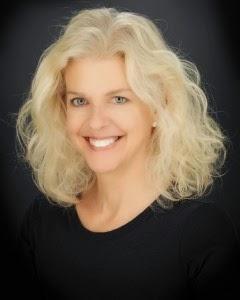
Golden Hour by Marie Lossky (@Marie.Lossky on Instagram)
As some of you may recall, one of our regular contributors, Jill Satterfield (see Happy News!), needed heart surgery this year. When I visited her after her operation, she told me a little story about how doctors were “blown away” by the rapidity of her recovery, which she attributed to her pranayama practice, among other things. I was so impressed by her story,—a perfect case of using yoga as adjunct to western medicine—that when she was completely recovered and back to working full time again, I asked her if I could interview her about the experience.Nina: Tell us a bit about yourself and what your practice was like, especially your pranayama practice, before you developed heart problems.
Jill: My practice varies depending on what’s going on in my life—this has always been the case, but especially so over the years. My work life has gotten busier, and my personal life has encountered more of what happens as we get older—loss of parents, illness of friends, more awareness of suffering, and in my case, more resolve to prevent or soothe it whenever I can.
In stressful times my practice gets quieter, softer, and more still. In active energetic times my practice reflects that. I practice pretty much daily, with meditation, asana and pranayama each being more or less the focal point for that particular period, but usually all three have a part.
Pranayama has always been really interesting to me because our breath is such a wise and seasoned reflection of what is going on for us mentally, emotionally, and physically. I pay good attention to my breath all the time because of that, and, in particular, when I tune into a particular session of pranayama I am listening more than telling. In other words, I listen to what my breath and body are doing naturally first, and rarely if ever push past any limitations that I might sense at that particular time. I am sensitive to prana—life force, energy, and the subtle energetic body of which prana is a factor—and I do my best to work with it tenderly.
Nina: What kind of heart problems were you suffering from and what kind of surgery did you have?
Jill: I had surgery to repair my mitral valve. It was discovered that a virus had attacked the valve and burned it away. They also found a hole between two of the hearts chambers. So, needless to say, the symptoms were not subtle. My heart didn’t beat properly, was working so hard all of the time—my energy was low, my brain wasn’t as clear, and my muscles were always sore. I didn’t feel normal, or rested, or ready to tackle much of anything really. I never knew if I would need to sit down, lie down, or if I would be relatively okay.
Nina: How did you use your practice to prepare for your surgery?
Jill: As far as asana, I mainly practiced restoratives because honestly that’s all I could do, and also that’s what felt the most supportive. I stretched, but as I say I was always sore, so it wasn’t pleasant. I knew to keep it up though, and very glad that I did.
I practiced very, very subtle breathing all around my heart. I also practiced longer slower breathing to try to calm the heartbeats, but that never really worked. Honestly, at a certain point, because my heart was trying so hard to support my system, it never really quieted down or could rest—I felt for it and it made me love and appreciate my dear heart even more!
Having meditated for 30 years, my meditation practice showed up the most as far as supporting me in the post surgery stage. I wasn’t afraid, I wasn’t anxious, I wasn’t angry, I was surprisingly okay with the reality of my situation. My mind, and the training of my mind—of being in the present —not far-flung into the unknown future of fear and anxiety, really was a great blessing. I was at ease with what was happening and that was great considering it went on for two years.
Nina: After your surgery, how did you use your practice for healing?
Jill: Once I was out of the ICU and in a room to myself, I asked to have the door closed at all times. I asked not to have any visitors so that I could rest and really focus on my healing. As I lay in bed all connected to tubes and drips, I would simply be still, and follow and feel my breath for great lengths of time day and night. In the times that the door had to be open or it became loud out in the hall, I listened to sound as my support for meditation. I also visualized different images, something I did a lot of after my last surgery over 25 years ago. It is more of a subtle body practice that I find very helpful in facilitating healing.
Nina: What did the medical experts say about your ability to recover and to what you attribute that?
Jill: My doctors were pretty blown away by the rapidity of my recovery once I left the ICU. And once I got home it was even faster. I attribute it to resting, meditating, eating well and being mentally at ease. As far as the pranayama goes, I definitely felt the years of getting to know my inner edge—how to “hear” my capacity and distinguish the physical feeling of this is enough from the often-confused mental/emotional sense of this is enough. In other words, from listening and being mindful of my thoughts, emotions, and the sensations in my body for so many years, I had developed a keen sense of what could be beneficial and when something was too much or too soon. I trust myself, and this was hard won!
I am so very grateful for this awareness and trust for I truly believe it enabled me to know exactly what to do for myself, and especially given the trauma of the surgery, I had complete relaxation around practicing right afterwards. My capacity to deepen and retain breath was beneficial on both gross and subtle levels, and the trust enabled me to relax and even have a sense of joy and play as well.
Nina: Is there anything else you’d like to tell our readers?
Jill: Sometimes we don’t fully appreciate the progress or importance of our practices, but there will be a time when our practices show up and show their strength and depth. So practicing both in the times that are easeful and in the times that are not creates this beautiful inner support system that is there for us when things get really rough.
Also, listening to ourselves—body, heart and mind—is probably one of the most valuable supports we have in taking great care of ourselves. Imposing a practice because it is in a book or because someone else says to do something isn’t always the best way to go because the book can’t ask you questions, and the system isn’t taking your particular circumstances into account. We can prescribe best practices for ourselves over time, and in the meantime it is really important to get outside support.
Support comes in many forms—from being kind to ourselves and also equally from our teachers and spiritual friends. I can’t stress the importance of asking for help, and being able to receive it! Find a teacher if you don’t have one, reach out to your friends, and be tender and thoughtful to yourself in whatever practices you are doing, or however you are just “being.”
Remember illness, loss, tragedies of all kinds happen to everyone, and just as we would reach out to others to help them, others want to help us. Learning to receive from others and learning how to deeply listen to our own body and heart/mind might just be best practices there are.


